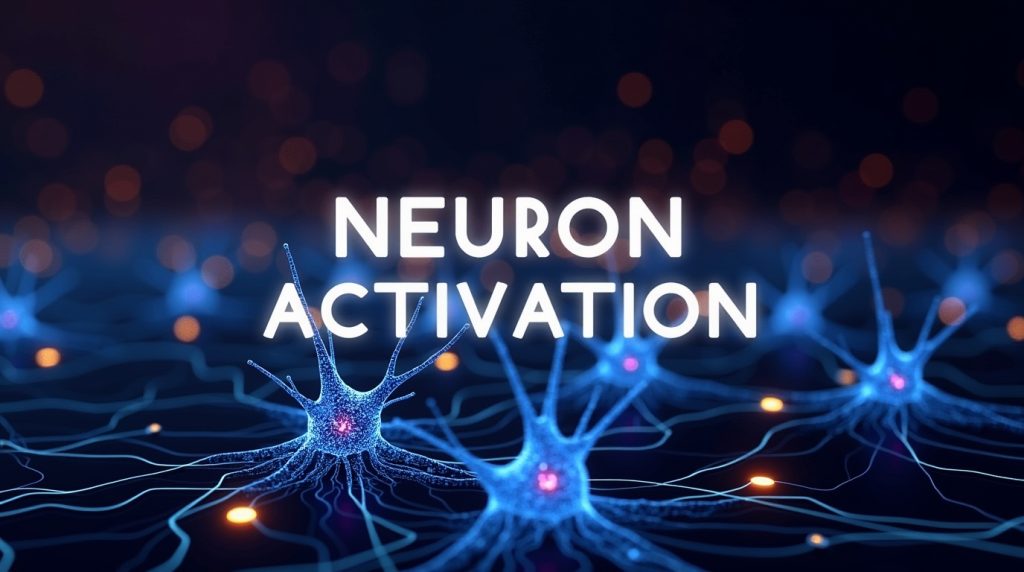Neuron activation is the fundamental mechanism driving modern deep learning performance, directly shaping how information propagates through neural networks. While dataset size and model scale often get attention, true limitations arise from gradient flow stability, where vanishing and exploding gradients are a direct consequence of the chosen activation function. The neuron activation function, f(x), defines the network’s approximation space, controls non-linear feature representation, and determines overall model capacity. Selecting and tuning the right function is critical to maximize efficiency, regularization stability, and model performance.
For AI practitioners, engineers, and researchers aiming to build scalable and reliable architectures, a deep understanding of neuron activation is essential. This guide breaks down classical functions such as Sigmoid and Tanh, examines modern alternatives like ReLU, GELU, and Swish, and highlights their effects on gradient dynamics, sparsity, and computational cost, providing a technical blueprint for high-performing neural networks. This article serves as the essential technical blueprint for advanced practitioners.
Key Takeaways
- Neuron activation is crucial for deep learning; it shapes gradient flow and allows models to handle nonlinear data.
- The vanishing gradient problem arises with traditional functions like Sigmoid and Tanh, limiting network depth and efficiency.
- ReLU offers a non-saturating gradient and computational simplicity, improving training efficiency and promoting sparsity.
- Modern neuron activation functions tailor to network architecture, enhancing performance and debugging capabilities.
- Mastering neuron activation helps achieve balance in model design, boosting learning, generalization, and computational cost efficiency.
Table of Contents
- What Does Neuron Activation Mean and Why Does It Matter?
- Why Mathematical Saturation Crippled Classical Functions?
- The Strategic Shift Neuron Activation to Speed and Sparsity with ReLU
- Designing Modern Neuron Activation Functions for Architectural Specialization
- Technical Comparison of Neuron Activation Function Performance
- Conclusion
- FAQs
What Does Neuron Activation Mean and Why Does It Matter?
The concept of activation is the functional gate that grants deep learning models the power to handle nonlinear data complexity. To grasp this computational process, we must first look at the biological inspiration that defines its purpose and its essential technical role.
Modeling the Biological Firing Threshold
A biological neuron constantly processes thousands of signals from adjacent cells. It performs a complex summation of these inputs. However, it only transmits a signal, called an action potential, if that summed input crosses a critical energy threshold. This decision, crucial for maintaining signal integrity, directly informs the engineering challenge of managing signal flow. Understanding reflex activity involves which neurons are critical to appreciating the fundamental thresholding mechanisms in biological systems.
This critical energy threshold is analogous to the concept of neuron activation potential in artificial intelligence systems. The idea of neuron brain activation governs how sensory data is converted into selective, purposeful information. This neuron activation original principle ensures that only highly relevant, strong inputs contribute to the network’s final output. This is why understanding neuron activation is fundamental to designing robust AI systems.
Establishing Non-linear Transformation Necessity
The primary purpose of the activation function is to inject non-linearity into the system. If the artificial neuron used only linear operations, stacking multiple layers would yield no benefit; the entire network would behave mathematically like a single layer. The Universal Approximation Theorem proves that a network requires this non-linear element to map complex, curved relationships found in real-world data.
A node produces an output by calculating the weighted sum of inputs and passing it through the activation function. This mathematical gate dictates whether the output signal is strong enough to propagate effectively. The activation potential of a neuron must be understood as the computational goal: enabling the model to represent curved patterns in data, not just straight lines. This non-linear transformation achieved by activation of a neuron is the source of deep learning’s true power.
This mechanism is the basis of neuron activation. The process of neuron anatomy activity is thus replicated computationally to facilitate this non-linear mapping. Therefore, addressing the fundamental question about what neuron activation means requires acknowledging its critical role as the nonlinear gate.

Why Mathematical Saturation Crippled Classical Functions?
The first generation of activation functions, including Sigmoid and Tanh, proved mathematically elegant but architecturally crippling for deep networks. Their properties directly led to the crisis that stalled deep learning development.
Dissecting the Vanishing Gradient Crisis
Deep learning models learn via backpropagation, where the network sends the error signal, or gradient, backward to adjust weights. Each layer computes the adjustment signal by multiplying the derivatives of its activation function. Functions like Sigmoid and Tanh are S-shaped and have flat extremes.
When the weighted input becomes very large, the function operates on its flat ends, a condition called saturation. In these saturated regions, the derivative (the slope) is infinitesimally small, nearing zero.
This occurs when a neuron’s active input falls far from the function’s center, causing it to become saturated. Repeated multiplication of these tiny derivatives across many layers causes the gradient signal to shrink exponentially, ultimately vanishing. By the time the vanishing signal reaches the initial layers, those weights stop updating, effectively halting the learning process for the majority of the network.
Why Sigmoid and Tanh Failed as a Neuron Activator?
The derivative range for Tanh is $$, and for Sigmoid, the maximum gradient is only 0.25. Repeatedly multiplying numbers less than one quickly drives the total product toward zero. This fundamental flaw means that the original functions for neuron activation proved inadequate for scaling network depth.
Furthermore, the exponential calculations required for both Sigmoid and Tanh make them computationally expensive. This complexity introduces significant computational overhead, especially compared to modern alternatives. Any “activador neuronal” (neuronal activator) that relies on such complex mathematics struggles to scale efficiently on dedicated hardware. This limitation made these functions fail as general-purpose neuron activators in large, modern architectures.
The Strategic Shift Neuron Activation to Speed and Sparsity with ReLU
The Rectified Linear Unit (ReLU) provided the critical breakthrough by offering a non-saturating gradient and extreme computational simplicity.
Achieving Stable Gradient Flow
ReLU is defined by f(x) = max(0, x). Its mathematical simplicity is its strength. For all positive inputs, the derivative is a constant 1.0. This constant gradient prevents the exponential decay of the error signal.
When signals multiply by one across many layers, the gradient flow stays stable and solves the vanishing gradient problem for positive inputs. This stability allows the neuron to activate a decision to translate into an efficient, stable backpropagation signal. This dramatically improved training efficiency. The ability to maintain gradient magnitude is essential for successful neuron activation in deep architectures.
How Sparsity Drives Computational Efficiency
The second significant advantage of ReLU is its creation of sparse activation. Any negative input immediately results in a zero output. This effectively turns off roughly 50% of the neurons in the network during a given forward pass. This enforced sparseness provides crucial engineering benefits:
- Computational Efficiency: Computing max(0, x) requires only a single comparison and simple arithmetic. This is significantly faster than the exponential calculations of Tanh or Sigmoid.
- Representational Efficiency: This sparsity means only a critical subset of active neurons is necessary to process a specific input. Modern LLMs consistently exhibit functional sparsity, where even without ReLU, they favour using only necessary pathways. This suggests sparsity is a universal property for accelerating ever-growing frontier models. When researchers inspect the model’s internal state, they track which neurons activate to identify the features that most influence the output.
The main trade-off is the “Dying ReLU” problem: if a neuron perpetually receives a negative summed input, its output is always zero, blocking all backward gradient flow and rendering the neuron permanently inactive.

Designing Modern Neuron Activation Functions for Architectural Specialization
Modern research focuses on hybrid, specialized, and smooth activation functions that mitigate ReLU’s drawbacks while retaining stable gradient flow.
Deploying Optimized Functions by Network Topology
The search for a single best activation function has given way to specialization. The network’s architecture and task now dictate the optimal choice. For example, the Transformer architecture, which drives Large Language Models, relies heavily on the smooth, probabilistic profile of the Gaussian Error Linear Unit (GELU). GELU offers the robust gradient stability necessary for training models that are hundreds of layers deep. This requirement for stable training and high performance necessitates specialized neuronal activation in large models.
In contrast, Recurrent Neural Networks (RNNs) like LSTMs and GRUs still strategically use Sigmoid for internal “gates.” This 0-to-1 range is ideal for representing binary decisions. Simultaneously, these networks often use Tanh for updating the central cell state because of its useful negative-to-positive range. This topological specialization shows that a function’s utility depends on its ability to meet a specific architectural requirement.
Applying Neuron Activation Analysis to Model Debugging
Beyond model optimization, the discipline of neuron activation analysis is now a critical tool for interpreting and debugging opaque models like LLMs. By using techniques like activation logging, researchers record exactly which activated neurons fire during a forward pass. This provides a direct trace of the model’s internal computation.
Analysis of these patterns reveals a significant finding: models generating correct outputs activate substantially fewer unique neurons (higher sparsity and agreement) compared to when they generate incorrect or divergent outputs. The activation patterns of neuron activation provide a direct trace of the model’s confidence. This analysis of neuron-activated patterns transforms the activation function from a passive gate into an active, diagnostic tool, providing a direct measure of a model’s confidence and reliability.
Further cutting-edge research has explored making the neuron activation function itself trainable, introducing adaptive functions that dynamically blend the strengths of specialized components like Swish and GELU.
Technical Comparison of Neuron Activation Function Performance
The evolution of activation functions showcases a continuous trade-off between maximizing speed and ensuring depth-stability.
| Function | Gradient Range (Saturation) | Computational Cost | Gradient Flow Stability | Typical Deployment |
|---|---|---|---|---|
| Sigmoid | Low Derivative (0, 0.25) Saturation | High (Requires exponentials) | Low (Vanishing Gradient) | Recurrent Cell Gating (LSTMs) |
| Tanh | Low Derivative (0, 1) Saturation | High (Requires exponentials) | Medium (Vanishing Gradient) | Recurrent Layer State Update |
| ReLU | Constant Derivative 1.0 (Non-Saturating) | Very Low (Simple comparison) | High (Stable for x>0) | Convolutional Neural Networks (CNNs) |
| GELU | Smooth, Non-Monotonic Profile | Medium (Requires approximation) | Excellent (Robust for Deep Networks) | Transformers and Large Language Models |
Conclusion
The mechanism of neuron activation is far more than an auxiliary mathematical detail; it is the fundamental architectural constraint that dictates a deep learning model’s capacity to learn, generalize, and perform at scale. The journey from saturating, costly classical functions (Sigmoid, Tanh) to efficient modern ones (ReLU, GELU) was defined by the need to manage the backpropagated error signal. The vanishing gradient crisis, tied to the activation curve’s slope, was solved, enabling deep network training and starting the modern AI era.
For advanced practitioners, the ongoing challenge is achieving the optimal balance across three competing objectives: maximizing representational expressivity, ensuring robust gradient stability, and prioritizing hardware computational cost. Optimal performance is now achieved by tailoring the activation function to the network topology, a strategy defined by the architecture’s neuronal activity needs. Mastery over this foundational mechanism is therefore essential for designing, optimizing, and debugging truly scalable and high-performing deep learning systems.
FAQs
A neuron activation is the final mathematical operation performed by an artificial neuron after summing its weighted inputs. The activation function introduces the critical non-linearity that allows the deep learning model to approximate complex, non-linear relationships, enabling sophisticated tasks like image recognition.
Mirror neurons form a class of visuospatial neurons in the brain that activate both when a person performs an action and when they observe someone else performing the same or a similar action. These neurons are considered essential for imitation and understanding others’ intentions.
Benzodiazepines reduce neuronal activity in the central nervous system by acting as positive modulators of the GABA-A receptor. GABA (gamma-aminobutyric acid) is the chief inhibitory neurotransmitter. By enhancing GABA’s inhibitory effect, benzodiazepines effectively decrease the overall electrical excitability of the nerve cells, leading to a reduction in generalized neuron activation.
The primary drawback of the Sigmoid function is its saturation behavior, which leads directly to the vanishing gradient problem. When inputs are far from zero, the function’s derivative approaches zero, causing the error signal (gradient) to vanish exponentially during backpropagation in deep networks. This dramatically slows or stalls the training process, making the function unsuitable for modern deep architectures.
For standard Convolutional Neural Networks (CNNs) in image classification, the Rectified Linear Unit (ReLU) remains highly favored due to its extreme computational speed and ability to create efficient, sparse neuron activation patterns. However, newer and smoother variants, such as Swish or adaptive functions, are now applied in advanced vision models. They, in turn, deliver slight yet consistent performance improvements.











